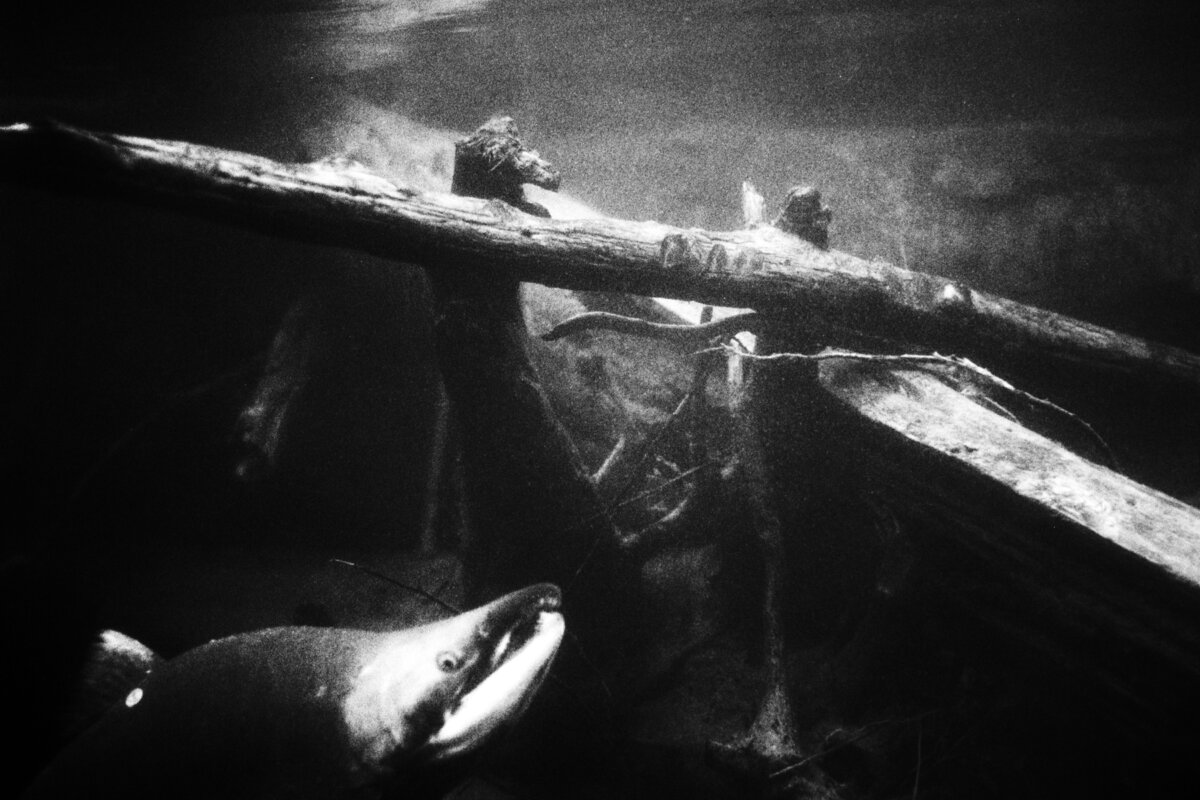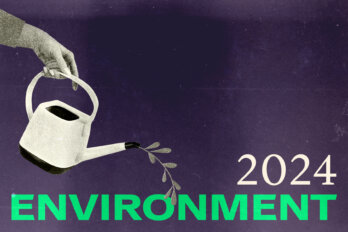ENVIRONMENT
THE OTHER EPIDEMIC: WHAT’S KILLING THE WILD SALMON?
A virus that flourishes in fish farms is now threatening wild populations. With hundreds of millions of dollars at stake, are business interests leading to government inaction?
BY MAX BINKS-COLLIER
PHOTOGRAPHY BY MELISSA RENWICK
Brian Wadhams, a fisher from ‘Na̲mg̲is First Nation, sometimes sits alone on his docked boat, a thirty-five-foot gillnetter christened Silver Fin II. As a boy, he accompanied his father and grandfather on fishing trips, and he started working as a deckhand at the age of eleven. “I’ll probably die with my boots on,” says Wadhams, now sixty-nine. He recalls spending days and nights at sea and catching salmon to share with fellow ‘Na̲mg̲is in Alert Bay, a village on an island east of Vancouver Island. He bought Silver Fin II to teach his two sons how to make a living off the ocean, but they told him they could not afford it. There simply aren’t enough fish left.
Listen to an audio version of this story
For more audio from The Walrus, subscribe to AMI-audio podcasts on iTunes.
Wild salmon in British Columbia are in trouble. According to one estimate, some populations have dropped by as much as 93 percent since the early 1990s. Lately, the situation has grown dire. In 2018, the Committee on the Status of Endangered Wildlife in Canada assessed sixteen chinook populations in southern BC and warned that half were at risk of disappearing. Last year, the number of sockeye returning to spawn in the Fraser River crashed to a record low. It’s hard to say exactly why this is happening, though logging, climate change, and overfishing all seem to play a role. Among the most controversial potential factors, however, is the virus Piscine orthoreovirus, or PRV. The virus isn’t necessarily fatal, but infected fish may be weakened and unable to swim as fast, making them more likely to be eaten by predators or fail to migrate upriver in order to spawn—both of which can have serious consequences on salmon survival. While PRV isn’t solely to blame for the decline, mounting evidence—consistent with research by an international cast of scientists—suggests the virus may be partly responsible for driving already struggling fish stocks to extinction.
Not everyone agrees. Among the dissenters is Fisheries and Oceans Canada (DFO), the federal department tasked with protecting those salmon and marine habitats more broadly. The DFO is worried about the calamitous state of the fish stocks—in June, it announced the closure of 60 percent of commercial fisheries to allow populations to rebound. But it has denied the virus’s link to any disease that could menace the wild salmon. Citing its own scientific assessments, the DFO basically dismisses PRV-1A—the variant of the virus found in BC—as an innocuous microbe that has been floating throughout coastal waters for a long time. A lot hinges on which side is right: PRV ends up affecting nearly 80 percent of the Atlantic salmon that aqua-culture companies transfer from onshore hatcheries into fish farms floating in the ocean. Fish farms are little more than big nets where hundreds of thousands of salmon grow until they are harvested and sold. Because so many fish are penned together, the virus can fester and spread to the Pacific wild salmon swimming past.
If the DFO recognized PRV-1A as a “disease agent”—that is, as causing or contributing to disease—the department would be legally prohibited from authorizing transfers of infected fish, a move that might well shipwreck the province’s lucrative salmon-farming industry. The seventy-four active farms, scattered mainly around Vancouver Island, support several thousand well-paying jobs and provide Canada, the world’s fourth-largest producer of salmon, with 60 percent of its farmed salmon. Several mayors on northern Vancouver Island have described the industry as “deeply integrated into the fabric of local lives.”
The declining numbers of West Coast salmon have profoundly affected those who rely on them. Wadhams recalls how commercial fishing once “kept our communities alive.” Prior to the mid-1970s, a salmon fisher could expect to make up to $30,000 from June to September. Now, they earn about a tenth of that or less. By Wadhams’s count, ‘Na̲mg̲is First Nation once boasted a fleet of several hundred boats. Maybe ten are left today. Each year, it’s not unusual to find another decommissioned vessel abandoned by owners who can no longer afford upkeep. “Our beach has become a cemetery for our boats,” says Wadhams. Many younger ‘Na̲mg̲is have left Alert Bay to pursue opportunities elsewhere; about half of the First Nation’s population already lives off of Cormorant Island. “It’s just so heartbreaking to see a community dying,” Wadhams says.
It is not just people who depend on the salmon. The fish are foundational to BC’s ecosystem. They feed a wide range of animals, including orcas, sea lions, wolves, bears, and eagles. Nutrients from salmon carcasses, hauled into the forests by bears, are even absorbed into the towering forests along the coast.
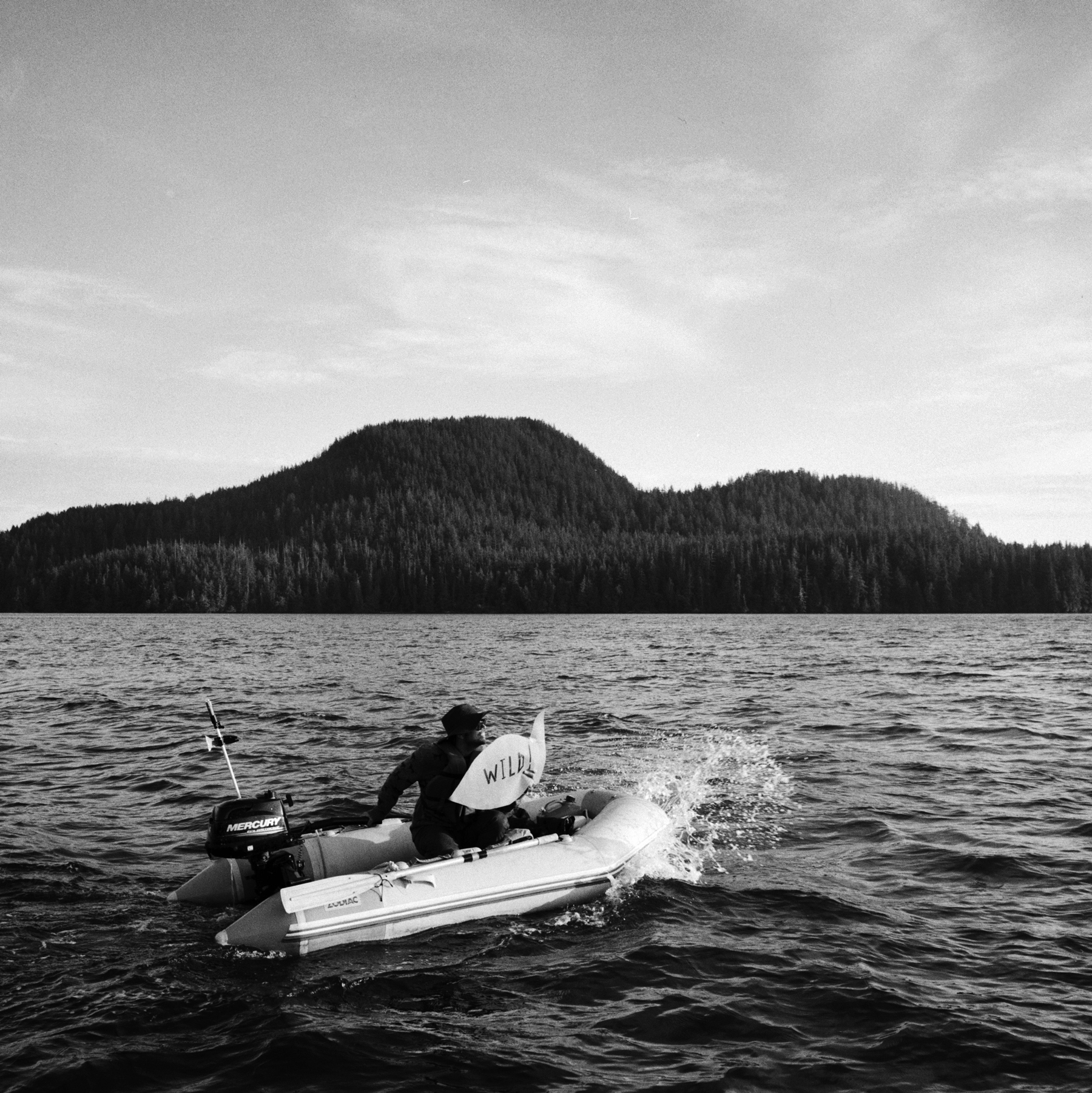
‘Na̲mg̲is First Nation is now in the Federal Court of Canada, facing off against the DFO over the department’s refusal to require testing for PRV-1A before salmon are transferred to fish farms. The ‘Na̲mg̲is’s view that the virus causes disease is shared by a broad range of conservationists, academic ecologists and biologists, and veterinarians around the world. Indeed, the DFO remains a global outlier, insisting that what it calls the “BC strain” of PRV is different, posing little danger to salmon stocks. Over 100 First Nations have called for the removal of fish farms over concerns that they spread pathogens. Recent research has shown just how high the stakes are. In May, the Strategic Salmon Health Initiative, a government-funded research operation devoted to conserving salmon, published an article showing that fish farms in BC are superspreaders of PRV-1A—the virus’s spread displays the properties of an epidemic. Viral ecologist Gideon Mordecai, lead author on the paper, emailed the DFO, urging the department to “not continue to perpetuate a false narrative” that the virus “poses ‘minimal threat to wild salmon.’”
That “false narrative” runs deeper than many Canadians realize. As part of their litigation, the ‘Na̲mg̲is have collected a trove of internal DFO records, including drafts of scientific assessments about PRV-1A and emails between government scientists. These documents and others, obtained via access to information requests, were shared with me by the First Nation’s lawyer and by marine biologist Alexandra Morton, who has been chronicling the DFO’s alleged mismanagement of the West Coast fishery for thirty years. They show that the department’s view of the virus is based on scientific conclusions that omit, downplay, or mischaracterize the relevant research. In one report, the DFO stated that a BC fish farm was free of a certain disease caused by PRV—despite the fact that an international team of researchers, including a DFO scientist, had diagnosed it.
“A lot of fairly definitive statements are made based on rather flimsy evidence” is how one scientist from the David Suzuki Foundation, emailing a DFO colleague, described the department’s conclusion that PRV-1A is harmless. Scientists, including those within the department, have consistently raised concerns about the way the DFO’s interpretation of the science often seems to benefit BC fish farms. “There is no way that given ALL of the evidence, including field studies, that one could plausibly state that PRV in BC is no[t] a disease agent,” wrote one senior DFO scientist, lambasting her own ministry.
In an email to me, the DFO said that it “conduct[s] rigorous research and risk assessments” to ensure fish farms “continue to pose minimal risk to their surrounding environment.” But the documents suggest otherwise. They cast serious doubt on the agency’s scientific integrity, its independence from industry, and its willingness to protect BC’s wild salmon.
The DFO is responsible for overseeing the seas and coasts, and many of the rivers and lakes, of a country that is surrounded by three oceans and that contains 20 percent of the world’s fresh water. With an annual budget of about $4 billion, the department employs some 12,000 people, among them 1,500 scientists, to carry out its mandate, mainly promoting marine business, like the fish-farming industry, and protecting aquatic ecosystems. The current incarnation of the DFO dates back to the 1970s, after the Fisheries Research Board of Canada—a respected, politically independent institution that conducted fisheries science—was dissolved and a new stand-alone department was created. The intention was to centralize the government’s fisheries-related activity into a single body. The outcome, according to Jeffrey Hutchings, a biology professor at Dalhousie University, was an organization whose science is susceptible to government interference.
Hutchings, who is also a fellow of the Royal Society of Canada and former chair of Canada’s national science advisory body on species at risk, began doing postdoctoral research at the DFO in Newfoundland in 1992, the same year then minister of fisheries and oceans John Crosbie imposed a moratorium on cod-fishing. Around 40,000 Newfoundlanders lost their jobs, and the province spiralled into an economic crisis and population loss from which it never fully recovered. The moratorium shocked Canada: Newfoundland’s cod fishery had acquired a quasi-mythic status. As far back as 1497, one observer described fish so plentiful that they “can be taken not only with the net, but in baskets let down with a stone.” So what happened?
Hutchings’s stint at the DFO led him to believe that the department’s structure makes it prone to decisions that selectively use science to justify political objectives. Because DFO scientists work under bureaucrats, he explained to me, there can be unofficial pressures on what kind of scientific information circulates inside the department. Inconvenient findings can end up being overlooked, or studies summarized in ways that skip their most problematic conclusions. In 1997, Hutchings co-authored an article revealing that DFO scientists had repeatedly warned that overfishing was imperilling Newfoundland’s cod. Those warnings were never factored into the department’s decision-making even though the DFO had access to reports as far back as 1986 that concluded it was overestimating the number of cod and underestimating the toll fishing was taking on them.
One of the overarching reasons the DFO treats science in this way, Hutchings told me, is that, while conserving marine life is part of its primary mandate, its de facto role is to promote marine businesses that generate jobs in otherwise hardscrabble coastal communities. This means decisions about fisheries can skew in industry-friendly directions. Ransom Myers, a fisheries biologist who worked at the department, told the CBC in 1998 that there was “an attempt to bureaucratically enforce a scientific position: that is, the cod stocks were increasing by great leaps and bounds, that the mortality due to fishing was low, and it simply was not so.” DFO bureaucrats “seemed to have a notion that you could sit in Ottawa and make up reality,” he told the Globe and Mail that same year. (In the late 1980s, a DFO scientist wrote a report about the department’s cod stocks assessment; the subtitle asked, in reference to the assessment, “Non gratum anus rodentum?” Translation: “Not worth a rat’s ass?”) Even after the cod collapsed, the DFO held its ground. A 1995 DFO report on the collapse, according to Hutchings’s article, contains “almost no mention” of the evidence showing that overfishing was the main cause.
A similar discomfort with data perceived as injurious to industry, Hutchings argues, has compromised the DFO’s efforts to conserve wild salmon stocks. In 1986, tense negotiations were held between the DFO, the BC government, and Alcan, a mining company and aluminum manufacturer. The dispute centred on the rate at which Alcan would be allowed to let water flow through a dam and down the Nechako River, as this would have serious consequences for the salmon breeding in those waters. An altered flow rate could affect water temperature and depth, potentially confusing or stranding the salmon and putting them at greater risk of being scooped up by bears and birds before spawning.
DFO scientists disagreed with Alcan consultants over the rate, but DFO bureaucrats allegedly pressured department scientists into producing reports that facilitated a compromise in Alcan’s favour. One DFO biologist, quoted in Hutchings’s 1997 paper, alleged that the department “surrender[ed]” to Alcan and started a “disinformation” campaign that included “disavow[ing] the existence of credible information contrary to ALCAN’s view of the impacts of the project.” This was achieved, the biologist continued, in part through the “intimidation and ‘gagging’ of employees.” Today, chinook and sockeye in the Nechako River are struggling. This March, Canada’s National Observer reported that the changes caused by the Alcan dam have, along with other factors, had a “devastating effect” on the fish.
The Nechako River is a tributary of the Fraser River, which is itself the site of an alarming decades-long drop in the number of sockeye salmon. From 2009 to 2012, the Cohen Commission, a $37-million federal inquiry, probed what was behind that decline. While the commission couldn’t find a single “smoking gun,” it made dozens of recommendations, including determining which pathogens migrating sockeye are being exposed to and gauging the effect of fish farms on wild salmon. The commission also called into question the DFO’s credibility as a steward. Because the DFO is mandated to both conserve wild fish and promote marine businesses, its “divided loyalties” could undermine its scientific operations.
Hutchings sees those same divided loyalties in the DFO’s policy of allowing transfers of fish infected with PRV-1A. The scientific reports underlying that policy, he told me, show signs of cherry-picked evidence that are “entirely reminiscent of the northern cod scenarios.”
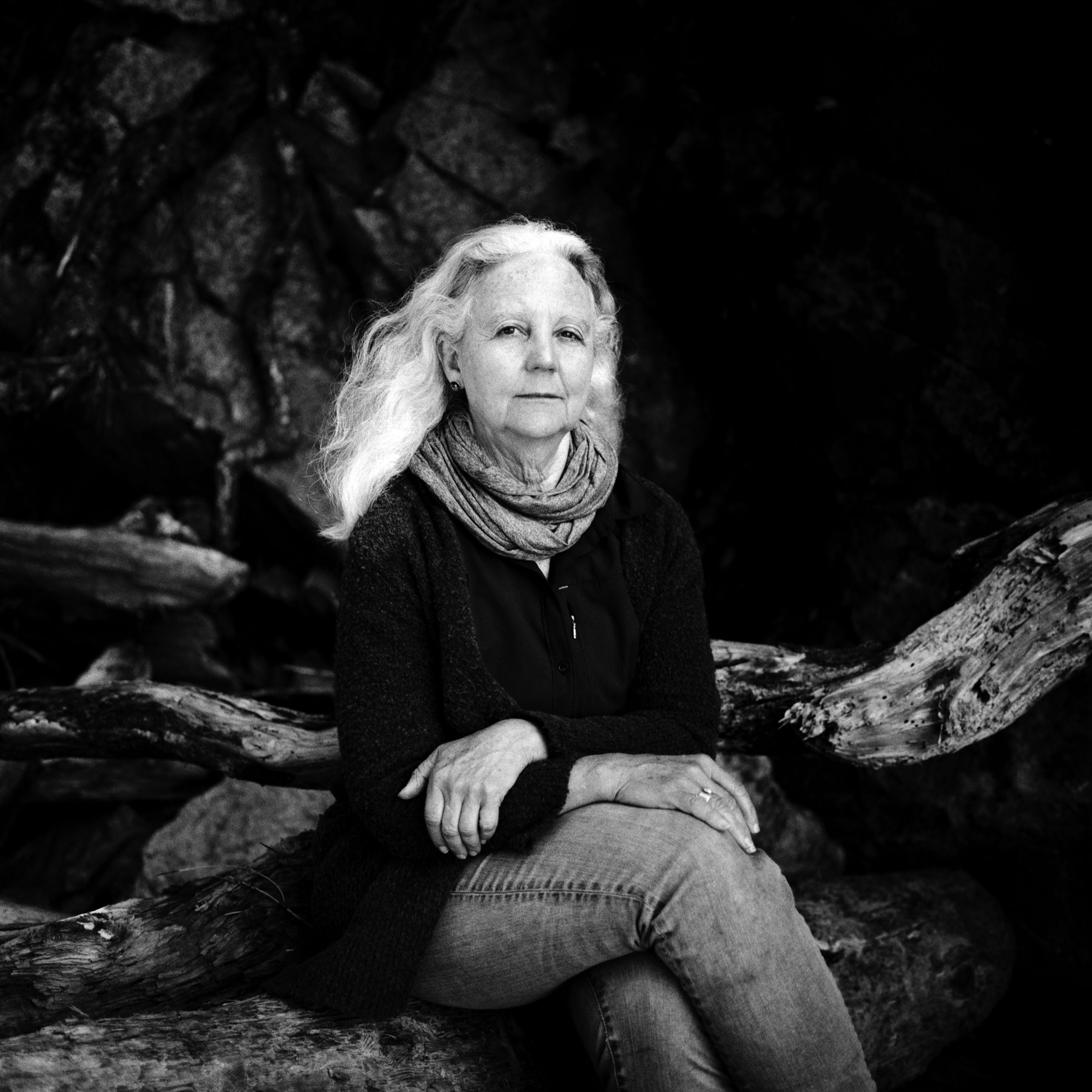
Alexandra Morton believes vested interests are at play. An independent biologist, she moved to the BC coast in 1980 to study orcas. Her research efforts shifted to probing the critical state of the orcas’ main food source—salmon—after local fishers began alerting her to the potential impact of fish farms.
In 2013, she was tipped off that a Norwegian company was transferring PRV-infected salmon into a fish farm off Vancouver Island. The virus was very likely introduced to BC by Norwegian fish farms in the late 1980s. In fact, it was first identified and studied in Norway, where many of the big fish farm companies are from. Morton quickly launched a court challenge against the DFO’s licences for these transfers—the first of a series of lawsuits the DFO would face against its policy.
Morton’s argument was straightforward: the DFO is legally barred from permitting the transfer of fish with a “disease or disease agent,” and PRV is a disease agent. Recent research had indicated that it caused heart and skeletal muscle inflammation (HSMI) in Atlantic salmon, which stock many BC fish farms. As the DFO insisted in court that the transfers were safe, it emerged that the department had not developed an official scientific position on PRV’s safety. In 2015, the Federal Court sided with Morton and quashed the parts of the licences that allowed for the transfer of PRV-infected fish. Justice Donald Rennie noted that the DFO had defended the licensing policy by making “unequivocal statements of science” that were “without evidence.”
After this rebuke, the DFO asked its scientists to assess the potential impact, if any, PRV-infected fish pose to wild salmon. Similar assessments—the DFO initiates over 100 of them a year—are conducted whenever bureaucrats need information in order to formulate policies. The task is entrusted to the Canadian Science Advisory Secretariat (CSAS), an internal organization that recruits a committee of department scientists to write the initial assessment, which is then reviewed in-house. A larger group of DFO scientists, which can also include several outside experts, then debates the assessment until a consensus is reached. A DFO-appointed chair makes the call about what goes into the final draft.
In this case, the DFO requested a fast-track assessment, usually done in moments of urgency. Certain aspects of the conventional process, however, are already cause for concern, says Stan Proboszcz, a conservationist who has participated in the CSAS assessment process on several occasions. The organization, in his experience, does not require disclosures of potential conflicts of interest despite the fact that DFO scientists regularly collaborate on research partly funded by the salmon-farming industry. Even without outright conflicts of interest, those close relationships can cause DFO scientists to adopt the industry’s general reluctance toward identifying disease risks linked to aquaculture. “The industry voice dominates the room,” Proboszcz says. In this context, the push for consensus is especially problematic. In principle, doubts are meant to be reflected in the document, but in practice, they often aren’t. If there are competing views, important objections can end up being sidelined by an industry-aligned majority.
One dissenting DFO scientist who worked on the 2015 assessment was Kristi Miller-Saunders. Head of molecular genetics at the DFO’s Pacific Biological Station since 2008, Miller-Saunders had already developed a reputation as a gifted researcher who made DFO bureaucrats uncomfortable by speaking candidly about the impact of pathogens on wild salmon: in 2011, she testified at the Cohen Commission that the DFO had forbidden her from speaking to the media about some of her research.
That same candour is on display throughout drafts of the 2015 assessment, where we can see her frustrated comments as she collaborates on the document. (Miller-Saunders declined to be interviewed for this story.) In one section, she challenges how the DFO diagnoses HSMI primarily by clinical signs. The approach runs counter to how the disease is detected by the international scientific community, which deems clinical signs—external, observable symptoms, such as lethargic swimming—unreliable: fish can be sick with HSMI and still behave normally. “Clinical symptoms are not required for the simple reason that clinical signs don’t necessarily occur,” said Emiliano Di Cicco, a veterinarian who collaborated with the DFO to research PRV-associated diseases for the DFO in Nanaimo. Instead, researchers look for distinctive lesions—and, when it came to BC salmon, they found them. The 2015 assessment recounts how pathologists discovered lesions “consistent with HSMI.”
That alone should have been enough to suspect PRV as a disease agent. But it wasn’t. Instead, the DFO dismissed these conclusions by claiming that there weren’t enough clinical symptoms to indicate disease. The DFO, in other words, was ruling out apparent proof of HSMI due to a requirement much of the world deems too questionable to trust. Why did the DFO demand clinical signs? At the time, it contended that, without them, it could not tell HSMI from three similar diseases that also afflict salmon. This stance isn’t supported by researchers like Di Cicco, who argue that HSMI’s lesions are often distinctive enough to identify. In fact, in the assessment, right before it insists on clinical signs, the DFO cites a seminal 2004 Norwegian study—the first to describe the features of HSMI—that states HSMI can be distinguished from two of those three diseases by the location of the lesions. Miller-Saunders was thus faced with a document that simply wasn’t honest about the science—a document that could have far-reaching consequences for the wild salmon.
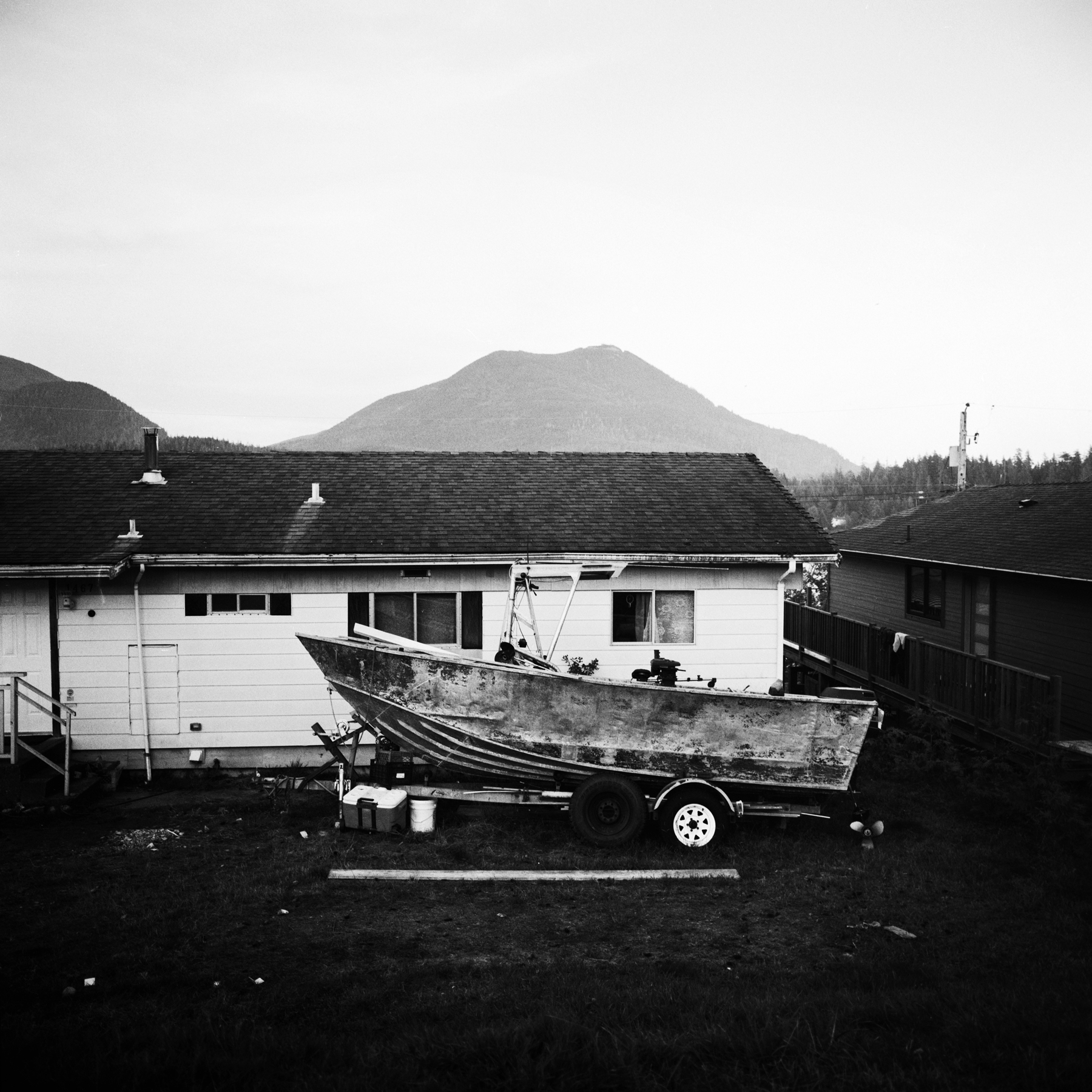
The conclusions of the 2015 assessment, argued Proboszcz in Policy Options, reveal a classic DFO strategy: exploit the uncertainty surrounding the available science. That meant twisting the lack of categorical evidence that PRV is harmful into evidence that the virus is safe. This is especially problematic because the DFO is legally required to follow the precautionary principle: if there are sufficient grounds for concern but a lack of full scientific certainty, it cannot carry out policies that can feasibly cause, according to the courts, “serious or irreversible harm”—in this case, authorizing transfers that could expose endangered wild salmon to a potential pathogen like PRV. Last December, the First Nations Leadership Council, a political advocacy group composed of First Nations leaders from BC, called on the DFO to—in the words of one chief—implement the principle “at every level of policy, programs, and management.”
Miller-Saunders’s comments on the 2015 assessment tried to steer the DFO toward exercising precaution. The DFO decided otherwise. When the assessment was completed, in September 2015, the document declared that PRV’s “lack of clear association with disease” in the laboratory meant the virus was unlikely to have “a significant impact” on wild salmon. This gave the department the cover it needed to grant a transfer licence to a fish farm company—even before the report was officially approved. The department maintained this licensing policy up until February 4, 2019, when the Federal Court struck it down a second time. Morton and others had challenged it, and won, again. In her ruling, justice Cecily Strickland found that the DFO’s PRV policy does not adhere to the precautionary principle “and fails to consider the health of wild Pacific salmon.”
The ruling required the DFO to create a new licensing policy. But, by this time, it had become much harder to use uncertainty around PRV as proof that the virus was harmless. Evidence of PRV-1A as a disease agent had progressed significantly since the 2015 assessment—Miller-Saunders herself, along with a team of international HSMI experts, had not only diagnosed HSMI on a fish farm but linked it to PRV-1A.
Following the 2019 ruling, the DFO requested that its scientists complete a form to try to determine whether PRV-1A was a disease agent. Classification would depend, in part, on whether there was a significant die-off of fish due to a disease associated with the virus, such as HSMI. But the bar that the DFO set for this die-off was nearly unattainable: it required that more fish die from HSMI within five days than would typically die from the disease over several weeks or even months. Miller-Saunders pushed back. The DFO was, in effect, avoiding the problem by defining it away. The department’s criteria, she argued in her comments, would make it impossible to declare HSMI a disease anywhere in the world. It would be like if Health Canada recommended doctors use an onerous, Canadian-specific method to call something lung cancer notwithstanding how the international medical community diagnosed it. When I asked Hutchings about this, he said that it exemplified the DFO’s “extremely problematic” habit of using idiosyncratic definitions that result in policies that put wild fish at risk.
Miller-Saunders revised much of the form, drawing on fieldwork, international research, and the DFO’s own studies, to provide a comprehensive picture of PRV-1A as a disease agent. But the DFO concluded that it wasn’t one anyway, relying on that form to reaffirm the transfer policy the ‘Na̲mg̲is are now challenging in court.
Last December, Norwegian researchers published a breakthrough study that used purified PRV-1A from BC. Scientists routinely inject animals with a suspected pathogen to see whether it causes disease—using purified samples is considered conclusive proof since no other microbe could be responsible. In the study, the purified PRV-1A caused HSMI lesions in multiple Atlantic salmon, one of the scientists told me in an email; one salmon developed lesions as severe as those seen in fish infected with a more virulent variant of the virus. “That completely confirmed what we have been saying all along,” says Di Cicco—PRV-1A is a disease agent.
PRV-1A, however, isn’t the only pathogen threat. One of the Cohen Commission’s most important recommendations focused on the Discovery Islands, an archipelago off the eastern coast of Vancouver Island whose waters are a critical route for sockeye migrating from the Fraser River. The DFO was charged with removing all fish farms from the Discovery Islands by September 30, 2020, if it could not guarantee that the farms posed “minimal risk of serious harm” to the sockeye. Sure enough, two days before the deadline, the DFO declared that the Discovery Islands fish farms cleared the bar.
One risk assessment the DFO had to conduct to reach this conclusion was for the bacterium Tenacibaculum maritimum, which recent research indicates may be causing large-scale losses among wild salmon populations—including the Fraser River sockeye. The densely packed farmed salmon are believed to incubate the bacterium and, in turn, infect passing fish. In a 2020 report, the DFO discounted the bacterium as a threat.
But the assessment contained a fundamental error in how it calculated that threat, says Andrew Bateman, a mathematical biologist at the Pacific Salmon Foundation. This error, according to Bateman, caused the risk of passing sockeye being harmed by a T. maritimum infection to appear lower than it actually was. Bateman was an external participant in the drafting of the report. He says that, in the drive for consensus, his concerns were dismissed throughout the process. “These assessment meetings get contentious,” he says. “They’re awkward and strained situations.” Hours after the final review, he emailed DFO scientists and offered a detailed explanation of the “critically important” error. The response? “Crickets,” he says.
When reached for comment, the DFO wrote in an email, “This follow-up received by the Department after the meeting had been dealt with during the process itself.” When I passed along this reply, Bateman retorted, “If the DFO wants to hide behind consensus reached in error, that’s its decision.”
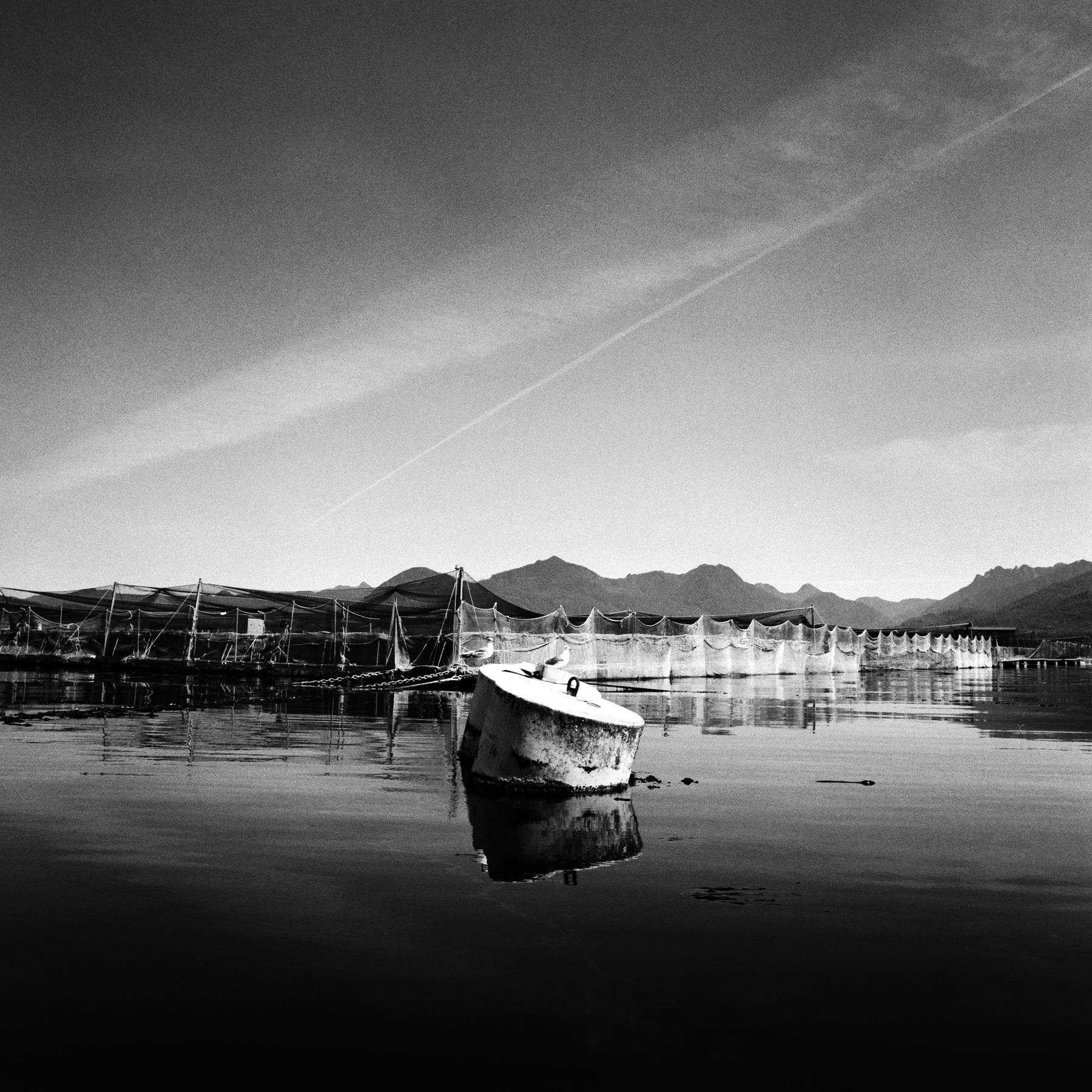
It remains to be seen whether the dysfunctional dynamics inside the DFO will lead BC salmon the way of Newfoundland cod. In June, minister of fisheries and oceans Bernadette Jordan announced a “transformative” $647-million plan to rebuild Pacific salmon stocks. Brian Wadhams, however, has little faith in the DFO. “For well over thirty years, [we’ve been] trying to get the government to pay attention,” he says. “They seem to turn a blind eye when it comes to corporate businesses and industries.”
But the tide may be turning. In 2018, BC premier John Horgan struck a deal with the ‘Na̲mg̲is, Kwikwasut’inuxw Haxwa’mis, and Mamalilikulla First Nations to phase out some fish farms near Wadhams’s home of Alert Bay. And, last December, in a surprising twist, Jordan announced that she would not renew the licences of the nineteen fish farms in the Discovery Islands—just three months after the DFO had vouched for their safety. The decision was based on consultations with seven local First Nations. The fish farms must now be free of salmon by June 30, 2022, and cannot restock in the interim. The BC Salmon Farmers Association, an aquaculture-industry lobby group, released a statement saying that nixing the licences would devastate communities on northern Vancouver Island.
Fish farming companies immediately took legal action to overturn Jordan’s decision. Two of those companies have since successfully challenged the restocking prohibition—in April, a judge overruled it. It was the DFO’s flawed reports that ultimately thwarted Jordan: the judge considered her decision unreasonable because her department’s own assessments proclaim fish farms to be harmless.
Wadhams was pleased by Jordan’s announcement, but he does not think it reflects a deeper departmental change of heart. After all, the DFO is still arguing in court that PRV-1A is not a disease agent. “The government is ignoring the real science,” he says. “That’s the battle that we’re up against.”

